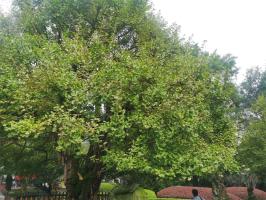Will Planting Trees Help to Offset Increase in CO2?
Climate change is one of the most pressing issues facing the world today. The increase in carbon dioxide (CO2) emissions is one of the major drivers of climate change. Naturally, one of the solutions proposed to mitigate the impact of CO2 release into the atmosphere is to plant more trees. But will planting trees help to offset the increase in CO2? This article examines this question.
What Is Carbon Sequestration?
Before delving into the benefits of planting trees for offsetting CO2, it is essential to understand the concept of carbon sequestration. Carbon sequestration is the process of capturing and storing atmospheric carbon dioxide. Trees and plants are natural carbon sinks, meaning they can absorb CO2 from the atmosphere and store it. This process is referred to as carbon sequestration. Trees absorb CO2 during photosynthesis and store carbon in their biomass, soil, and leaves.
The Benefits of Planting Trees for CO2 Sequestration
Planting trees is one of the most cost-effective ways to reduce greenhouse gas emissions. Trees absorb CO2 during photosynthesis, converting it into oxygen and glucose. The carbon is then stored within the tree and surrounding environment. Trees can store carbon for up to several decades or even centuries, depending on the species and growth rate. As such, planting more trees can lead to a reduction in CO2 emissions, which contributes to climate change mitigation.
The Limitations of Planting Trees for CO2 Sequestration
While planting trees is an effective way to reduce CO2 emissions, it is not a silver bullet. There are several limitations to this approach. Firstly, planting and maintaining trees require space, time, and resources. Land use policies can restrict the availability of land for tree planting. Secondly, trees can only store a limited amount of carbon, and this uptake capacity depends on a variety of biological and environmental conditions. Additionally, trees can release carbon back into the atmosphere when they die or are cut down, which negates the carbon sequestration benefits.
Conclusion
In conclusion, planting trees is an effective way to reduce CO2 emissions and mitigate the impact of climate change. Carbon sequestration, the process of capturing and storing atmospheric carbon dioxide, is a critical component in climate change mitigation, and planting trees is one of the most cost-effective ways to achieve this. However, it is essential to note that tree planting is not a silver bullet, and it does not solve all the problems associated with climate change. To achieve meaningful impact, tree planting must be one of several strategies implemented for CO2 reduction efforts.

 how many times do yo...
how many times do yo... how many planted tre...
how many planted tre... how many pine trees ...
how many pine trees ... how many pecan trees...
how many pecan trees... how many plants comp...
how many plants comp... how many plants can ...
how many plants can ... how many plants and ...
how many plants and ... how many pepper plan...
how many pepper plan...






























